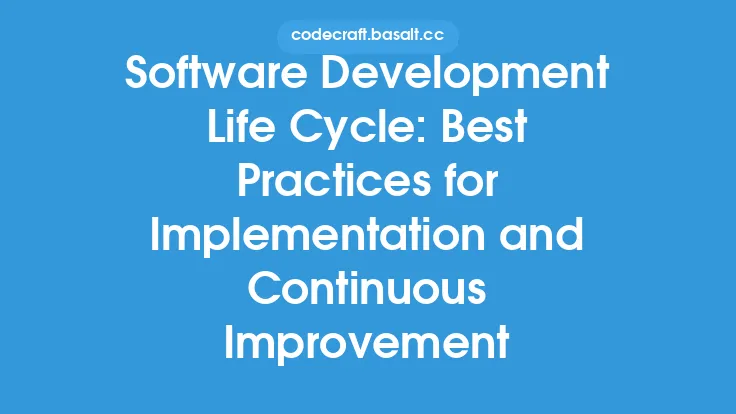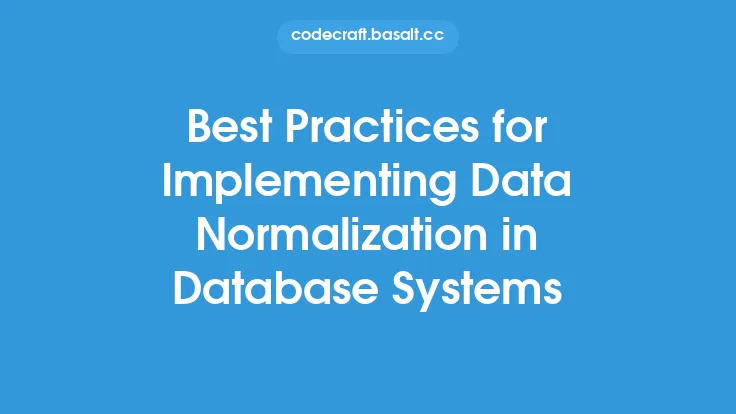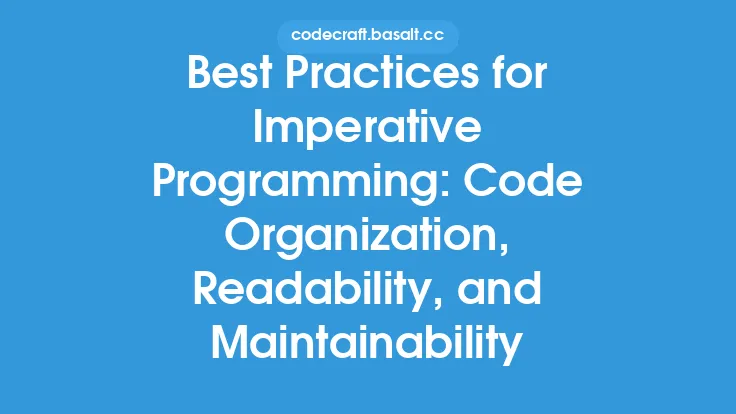Implementing constraint programming in software projects can be a powerful way to model and solve complex problems. However, to get the most out of this paradigm, it's essential to follow best practices that ensure the efficient and effective use of constraint programming techniques. In this article, we'll delve into the key considerations and guidelines for successfully integrating constraint programming into software projects.
Understanding the Problem Domain
Before implementing constraint programming, it's crucial to have a deep understanding of the problem domain. This involves identifying the key variables, constraints, and objectives that define the problem. A thorough analysis of the problem domain helps to ensure that the constraint model is accurate, complete, and relevant to the problem at hand. This, in turn, enables the development of effective constraint programs that can efficiently solve the problem.
Choosing the Right Constraint Programming Language and Tools
The choice of constraint programming language and tools can significantly impact the success of a software project. Different languages and tools offer varying levels of support for constraint programming, and some may be better suited to specific problem domains or application areas. When selecting a constraint programming language and tools, consider factors such as ease of use, performance, scalability, and integration with other programming languages and systems. Popular constraint programming languages include OPL, MiniZinc, and Python libraries like Google OR-Tools and PuLP.
Modeling Constraints and Variables
Effective constraint modeling is critical to the success of constraint programming. This involves defining the variables, constraints, and objectives that comprise the problem model. When modeling constraints and variables, consider the following best practices:
- Use clear and concise variable names and definitions to ensure that the model is easy to understand and maintain.
- Define constraints in a way that is consistent with the problem domain and avoids ambiguity.
- Use constraint types that are appropriate for the problem, such as linear, nonlinear, or logical constraints.
- Ensure that the model is consistent and well-formed, with no redundant or conflicting constraints.
Implementing Search Strategies
Search strategies play a crucial role in constraint programming, as they determine how the solver explores the search space to find solutions. When implementing search strategies, consider the following best practices:
- Choose a search strategy that is appropriate for the problem, such as systematic search, local search, or hybrid search.
- Use techniques like constraint propagation and pruning to reduce the search space and improve search efficiency.
- Consider using heuristics or metaheuristics to guide the search and improve solution quality.
- Monitor search performance and adjust the search strategy as needed to ensure that the solver is making progress and finding high-quality solutions.
Integrating Constraint Programming with Other Paradigms
Constraint programming can be used in conjunction with other programming paradigms, such as object-oriented programming or functional programming, to create hybrid systems that leverage the strengths of each paradigm. When integrating constraint programming with other paradigms, consider the following best practices:
- Use a modular architecture that separates the constraint programming component from other system components.
- Define clear interfaces and APIs for interacting with the constraint programming component.
- Use data structures and algorithms that are compatible with the constraint programming language and tools.
- Consider using frameworks or libraries that provide built-in support for integrating constraint programming with other paradigms.
Testing and Debugging Constraint Programs
Testing and debugging constraint programs can be challenging due to the complex and often nonlinear nature of constraint models. When testing and debugging constraint programs, consider the following best practices:
- Use a systematic approach to testing, including unit testing, integration testing, and system testing.
- Use debugging tools and techniques, such as constraint visualization and search tracing, to identify and diagnose issues.
- Consider using automated testing frameworks or libraries that provide built-in support for testing constraint programs.
- Use version control systems to track changes to the constraint model and ensure that changes are properly tested and validated.
Maintaining and Evolving Constraint Programs
Constraint programs can evolve over time as the problem domain changes or as new requirements emerge. When maintaining and evolving constraint programs, consider the following best practices:
- Use a modular and flexible architecture that allows for easy modification and extension of the constraint model.
- Use version control systems to track changes to the constraint model and ensure that changes are properly tested and validated.
- Consider using agile development methodologies that emphasize iterative and incremental development, continuous testing, and rapid feedback.
- Use refactoring techniques to simplify and improve the constraint model, reducing complexity and improving maintainability.
Conclusion
Implementing constraint programming in software projects requires careful consideration of several key factors, including problem domain understanding, language and tool selection, constraint modeling, search strategies, integration with other paradigms, testing and debugging, and maintenance and evolution. By following best practices and guidelines, developers can create efficient, effective, and scalable constraint programs that solve complex problems and provide high-quality solutions. Whether you're working on a small-scale project or a large-scale enterprise system, constraint programming can be a powerful tool for modeling and solving complex problems, and by applying these best practices, you can unlock its full potential.





